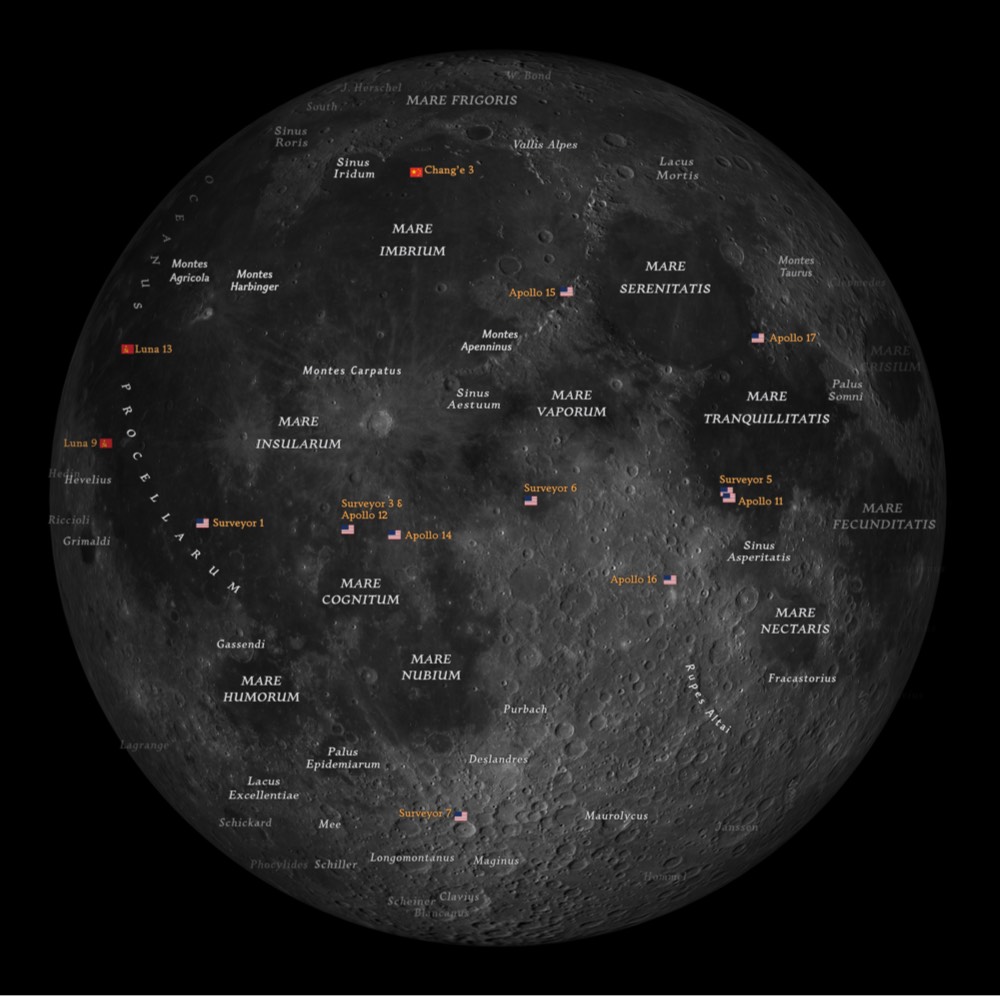

ESA’s SMART-1, short for Small Missions for Advanced Research and Technology-1, was launched on 27 September 2003. This view of the Moon was captured by SMART-1’s camera on 3 February 2006, when the craft was 2474 km above the surface. Keldysh was a key figure in the Soviet space programme. The Moon’s features are usually named after either mythological figures, as demonstrated by Atlas and Hercules, or in recognition of deceased scientists or explorers, as is the case with Keldysh, which is named for Soviet mathematician Mstislav Vsevolodovich Keldysh (1911–78). This practice, of studying, mapping and naming the features on the lunar surface is known as selenography. Keldysh, the leftmost crater in this frame, was originally called Hercules A before it was renamed by the International Astronomical Union in the early 1980s.

Most lunar craters are satellites one major feature is originally named, and any surrounding satellites take on the same moniker followed by a capital letter: Atlas, Atlas A, and so on. Hercules F is known as a satellite crater. Just below Atlas, out of frame, lies the Hercules crater, the ‘parent’ of Hercules F. Some of the crater’s features are thought to have been influenced or shaped by volcanism – most prominently, the branching web of deep fissures and cracks stretching throughout the crater, known as Rimae Atlas. The crater floor is peppered with hills, rifts and fractures that surround a clearly visible central mountain (seen casting a shadow). It is a great way to explore the Moon and learn more about its features.Atlas is a couple of kilometres deep and nearly 90 km in diameter, with an outline that is slightly more polygonal than circular.
#ONLINE MOON ATLAS SOFTWARE#
The software is ideal for amateur astronomers, space enthusiasts, and educators alike. It includes detailed maps, high resolution images, 3D terrain models, observing tools, and educational resources. Moon Atlas software is a powerful tool for exploring the Moon and its features. In addition, the software can be used to create presentations and other materials for use in the classroom. These resources can help users learn more about the Moon and its features. Educational Resources: Moon Atlas software includes a variety of educational resources, including interactive tutorials and quizzes.The almanac provides detailed information about the Moon’s position and phases. These include a detailed calendar of lunar events, a real-time sky chart, and a lunar almanac. Observing Tools: Moon Atlas software includes a variety of tools to help plan observing sessions.The model also includes detailed information about each feature, such as its size and composition. The model is based on the latest data from the LRO and can be used to explore the lunar surface from any angle. 3D Terrain Models: Moon Atlas software includes a 3D terrain model of the Moon.The images provide a unique perspective of the lunar surface.

These images are taken from a variety of sources including the Lunar Reconnaissance Orbiter (LRO), Lunar Orbiter, and NASA’s Apollo missions. High Resolution Images: Moon Atlas software includes an extensive collection of high resolution images of the Moon.The maps can be used to identify features and plan observing sessions. The maps are highly accurate and include features such as craters, mares, mountains, and rilles. Detailed Moon Maps: Moon Atlas software contains a comprehensive set of detailed maps of the lunar surface.The Virtual Moon Atlas allows users to explore the Moon's features in detail. The software can be used to identify lunar features, plan observing sessions, and look back at past observations. It is an ideal tool for amateur astronomers, space enthusiasts, and educators alike. This software is designed to provide an immersive experience of the lunar surface with detailed maps, high resolution images, and 3D terrain models.


 0 kommentar(er)
0 kommentar(er)
